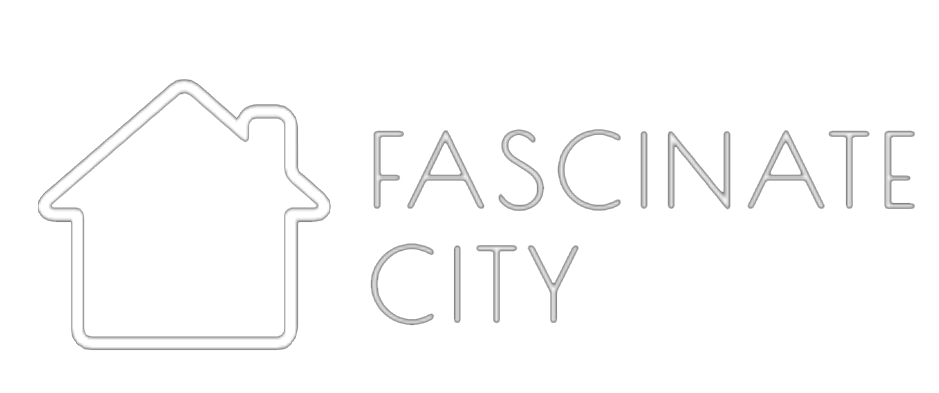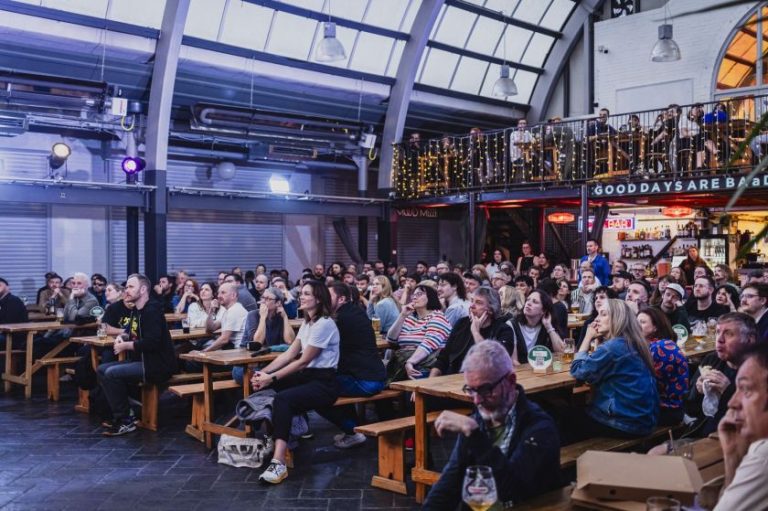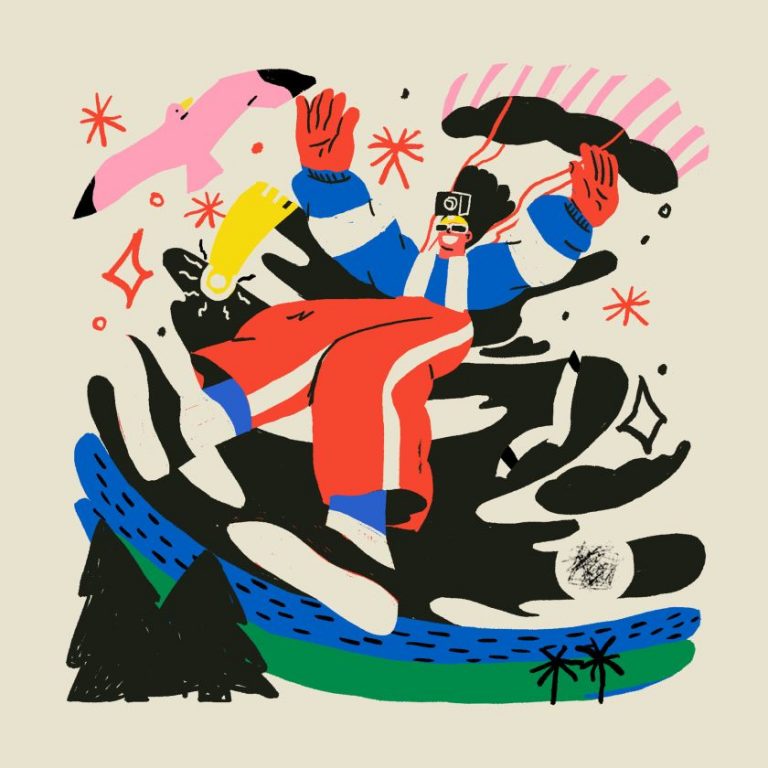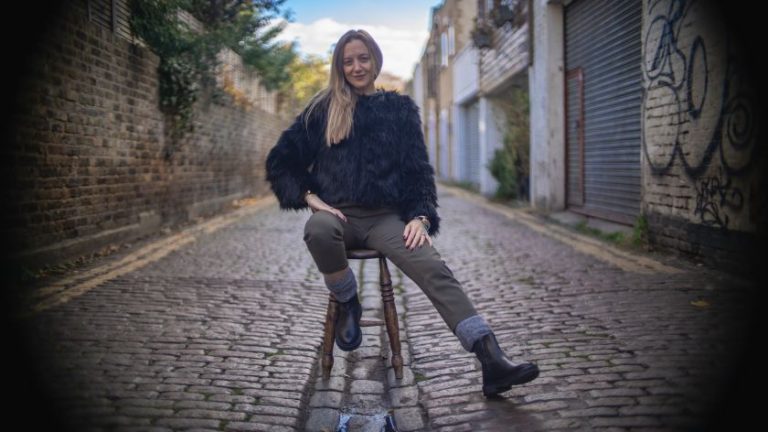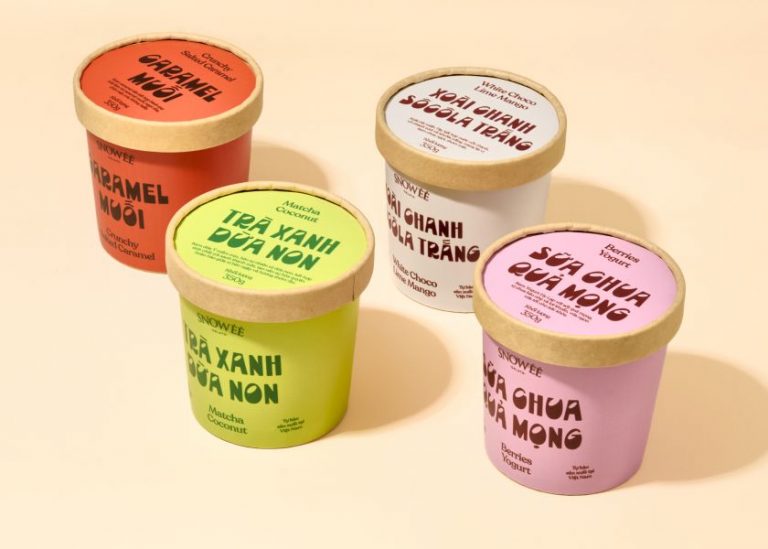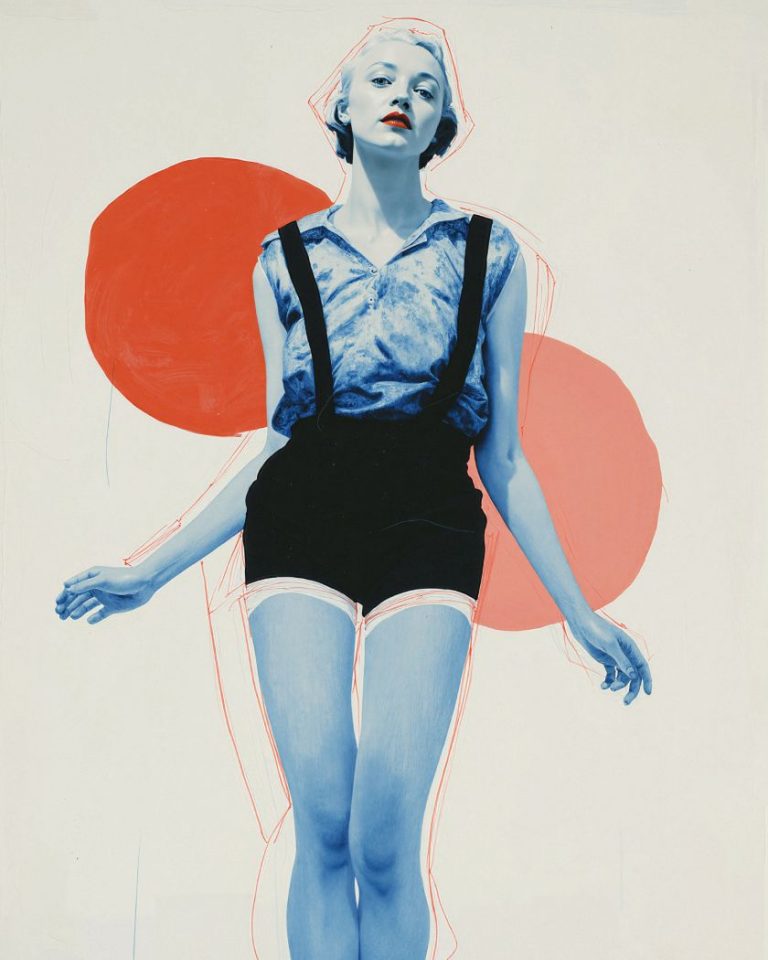In its ongoing collaboration with Ink Grade Estate, design studio Edition has transformed a high-altitude vineyard into a high-touch experience, crafting everything from tactile tasting menus and wax-sealed folders to expressive labels and immersive projections.
At nearly 1,800 feet above sea level, Ink Grade Estate occupies a wild, volcanic stretch of Napa Valley’s Howell Mountain. The terrain is steep and remote, draped in eucalyptus and carved into terraces, where vines grow organically in a landscape that feels more ancient than cultivated. If you happen to visit the winery’s tasting room in downtown St. Helena, miles from the estate itself, you’ll still feel part of the mountainous landscape.
That’s thanks to Edition, a San Francisco and Portland-based design studio that’s spent the last few years crafting a richly layered, immersive brand experience for Ink Grade. From tactile tasting collateral and heritage-inspired labels to immersive soundscapes and show-stopping boulders, the studio has created a visual and sensory language rooted in place but made to travel.
“From the beginning, it was clear that everything about Ink Grade pointed back to the land,” says Katelyn Peterson, co-founder and partner at Edition. “The Howell Mountain estate is steep, remote, and volcanic—and there’s a deep reverence for that wildness. It shaped the brand in many ways; it’s part of the DNA.”
That reverence is on full display in the estate’s St. Helena tasting pavilion. Since it’s located far from the vineyard itself, the challenge was to bridge that physical gap with a sensory one – something Edition approached with impressive ingenuity.
Tactile finishes, natural materials, and immersive design details combine to create a feeling of being transported. A two-ton boulder from the property anchors the centre of the room. “It quite literally grounds the space, making it feel like a piece of the mountain is rising from the floor,” says Katelyn.
In addition to this visual theatre, Edition designed a suite of tasting materials that feel both practical and poetic. Menus, maps, vineyard notes, and order forms are housed in custom folders made from thick, textured paper with sculpted blind embossing that mimics the contours of the hillside.
The eucalyptus motif (a plant that flourishes across Howell Mountain) reappears throughout, paired with foil stamping and hand-crafted wax seals that elevate the entire experience. It is a thoughtful design in the truest sense: everything is beautiful, but nothing without purpose.
“Tactility is such a powerful tool, especially in wine, where the entire experience already calls on so many of the senses,” says Katelyn. “For us, it’s less about layering effects for effect’s sake and more about choosing a few details and giving them the space to resonate.”
Restraint was also part of the Edition’s brief, and Katelyn explained that “refinement isn’t about how much you add; it’s about what you choose to leave in.” She adds, “The materials themselves do a lot of the work… The texture of the paper, the sculptural quality of the emboss, the weight of the suite—it all signals care and craft, without needing to be loud.”
This philosophy carries across the brand ecosystem, including Ink Grade’s quietly striking labels, which feature vintage lithographs of California wildlife, each carefully sourced from historical archives. Katelyn says the idea predates Edition’s involvement but made perfect sense to carry through. “The use of vintage lithographs felt like a meaningful way to pay homage to the early settlers of California who were instrumental in discovering the land’s potential.”
Those original artists documented the natural world with reverence, much like winemaker Matt Taylor approaches his work today. “He is deeply influenced by art (both visual and poetry) and aims to engage all of the senses in his wine,” Katelyn notes. “It mirrors Ink Grade’s own respect for the land.”
The archival approach also created an opportunity to extend the brand into the physical space. The team purchased original lithographs to display in the tasting room, strengthening the continuity between product and place. It’s just one example of how Edition has crafted an interconnected, tactile brand world where no element is purely decorative and no detail is too small to matter.
Even the most utilitarian pieces, from the menus and maps to the tech sheets, are treated with this same care. As Katelyn puts it: “Even a simple menu or map should feel like it belongs in a space where everything has been carefully considered. Nothing is just informational. It’s all part of the experience.”
That commitment to cohesion has proved essential, especially when managing a multifaceted identity across so many different touchpoints. Edition’s strategy is methodical: define the foundations early, then use them to guide everything that follows.
“We spend a lot of time upfront defining the core elements – typography, tone, materials, pacing – so that every piece has a shared language, even if the medium shifts,” says Katelyn. “Cohesion doesn’t mean uniformity. It’s about creating a system that’s tight enough to hold together but open enough to evolve.”
That sense of evolution is key to the long-term nature of the collaboration. What began as a foundational brand-building exercise has blossomed into an ongoing creative partnership, with Edition often stepping in for special projects and high-stakes moments. Katelyn says: “Now, we’ve worked with them for years. We have an intuitive sense of what fits, what doesn’t, and how to guide new projects so they feel fresh while staying on-brand.”
That kind of relationship breeds creative shorthand and trust. It also allows Edition to take smart risks within a known system, something Katelyn finds creatively rewarding. “It’s a different kind of challenge – not building something new, but continuing to evolve something you already know deeply.”
The result is a brand that feels less like a set of assets and more like a living, breathing place. One where you can practically feel the crunch of soil beneath your feet, even if you’re standing in the middle of a tasting room miles from the mountain.
As Katelyn sums it up: “Visitors should walk away feeling like they had been to the vineyard, even if they never set foot on the mountain.”
